Authorities lifted tsunami warnings for Chile's long coastline early Wednesday after a magnitude-8.2 earthquake struck the South American nation's northern coast. Six people were crushed to death or suffered fatal heart attacks, a remarkably low toll for such a powerful shift in the Earth's crust. The extent of damage from Tuesday night's quake couldn't be fully assessed before daybreak, President
Michelle Bachelet said, but she wasn't taking any chances. She declared a state of emergency in the region and sent a military plane with 100 anti-riot police to join 300 soldiers deployed to prevent looting and round up escaped prisoners.
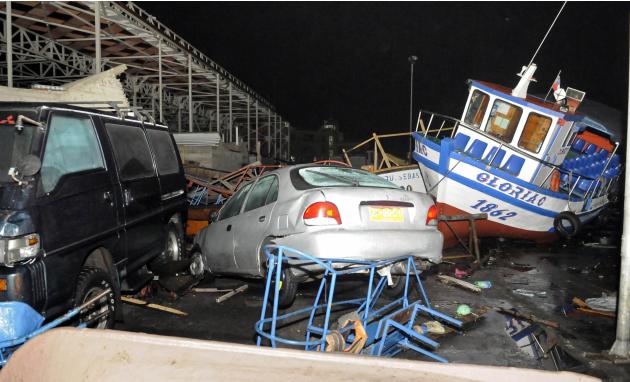
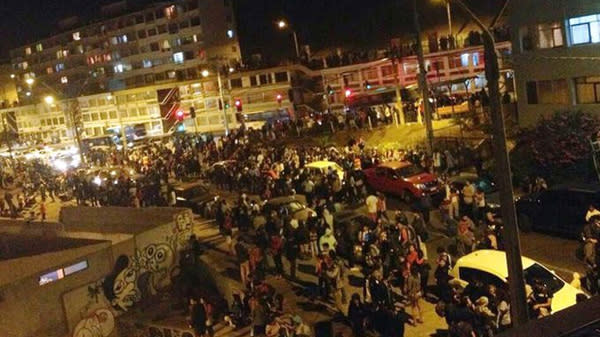
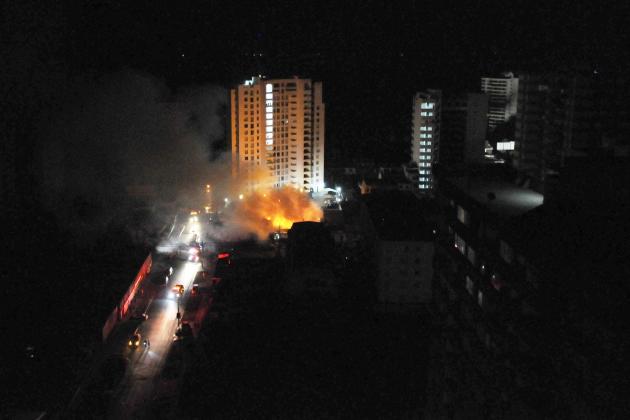
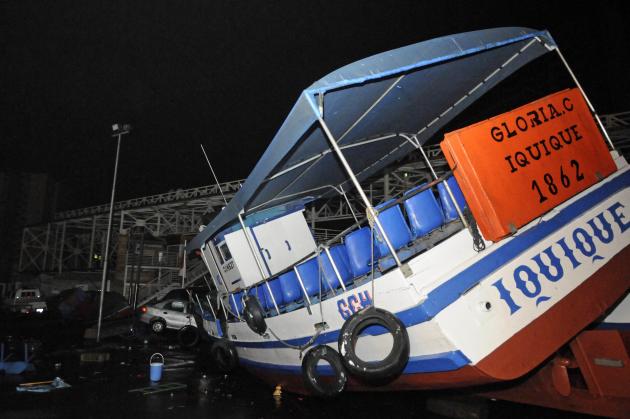
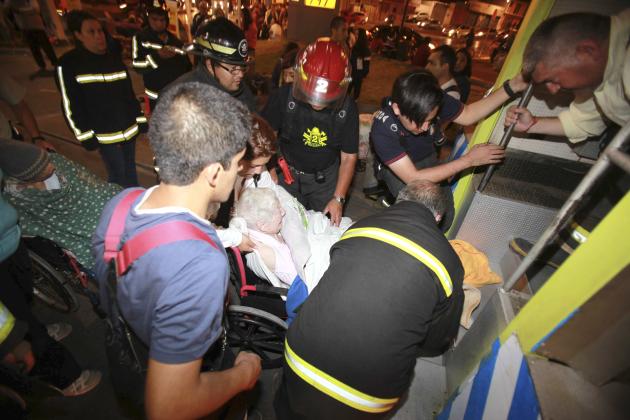

Military convoy arriving to give aid and stop looting
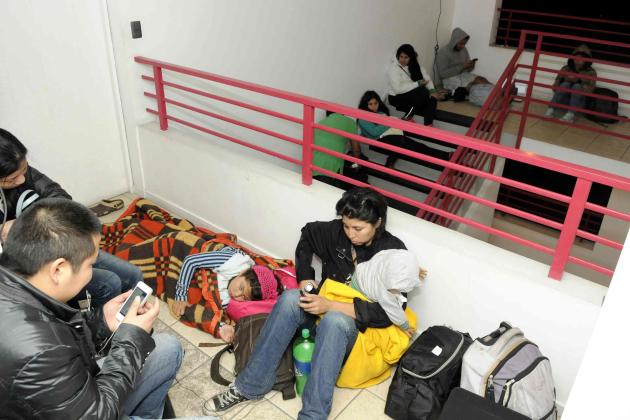

The Quake struck about 95 kilometres northwest of the city of Iquique, in the north of Chile. Based on reports submitted to the US Geological Survey, the quake intensity continued to grow throughout the night until it reached the second highest rating on the Mercalli Intensity Scale. The temblor was so powerful due to being very shallow, focused only about 10 kilometers under the sea floor, in an area of the boundary between the Nazca plate and the South American plate that's known for being a particularly strong focus for stress between the plates. The result was a massive 'megathrust' quake. Just as it happened with the megathrust quake off the coast of Japan three years ago, the sudden, powerful shift in such a large amount of earth set off a tsunami that spread out along the coastline. The tsunami set off warnings and watches throughout the Pacific Ocean, impacting on the coast just 20 minutes later in Iquique, and as far north as the coast of Peru and as far away as Coquimbo, over 1,300 kilometres to the south. According to Earthquake-Reports.com, the mayor of Iquique said that the tsunami washed up to 100 metres on shore, or roughly three city blocks.
Second Quake Hits 24 Hours Later

President Bachelet was visiting the northern city of
Iquique to see the damage of the first quake
A powerful 7.6 magnitude earthquake
has rocked northern Chile, just over 24 hours after an 8.2 tremor killed six
people, destroyed 2,600 houses and led to mass evacuations. A tsunami alert in Chile and Peru was again issued, but was later lifted
after waves hit coastal areas.
Chilean President Michelle Bachelet was among those evacuated on
Thursday. The quake is the strongest of several aftershocks following Tuesday's
tremor. There have been no reports of damage from the latest quake.
The aftershock caused buildings to wobble and people to run into the streets
in the port of Iquique, which was one of the cities hit by Tuesday night's
quake. The latest quake was centred 23km (14 miles) south of Iquique.
The US Geological Survey said the aftershock had a depth of 20km (12 miles)
and was felt across the border in southern Peru, where people in the cities of
Tacna and Arequipa also fled buildings.
President Bachelet had earlier praised the "calm behaviour" of residents
following Tuesday evening's quake.
Chile is one of those countries that expects to experience large quakes. It's
only four years since the 8.8 event at Maule much further to the south. The drivers are the same. Chile runs the boundary between the Nazca and South
American tectonic plates. These are vast slabs of the Earth's surface that grind
past each other at a rate of about 80mm per year. The Nazca plate, which makes
up the
Pacific Ocean floor in this region, is being pulled down and under the
South American coast. It makes the region one of the most seismically active on
the globe.
This particular event occurred in what seismologists refer to as the Iquique
seismic gap - a segment of the plate boundary that has been relatively quiet in
recent times. {The last big event here was the magnitude 8.8 tremor of 1877, just
to the south, which claimed more than 2,000 lives.}
"I think you have shown us all a tremendous example," Ms Bachelet said during
a visit to the worst affected areas. Ms Bachelet declared northern provinces - Arica and Parinacota, and
Tarapaca - disaster areas.
"We are here to recognize the calm behaviour of the people of Iquique, who
showed great civic responsibility, as did those of Arica," said Ms Bachelet.
Fires destroyed some businesses in the area and fishermen found their boats
sunken and damaged in Iquique harbour. Waves of up to 2.1m (about 6ft) hit the area.
Some 40,000 people in Tarapaca remain without power, said Ricardo Toro of
Chile's National Emergency Office.
Hours after the first major earthquake, Chile's army was deployed to Iquique
after some 293 inmates escaped from a women's jail.
Despite the strength of the quake, the region appears to have escaped significant damage

Two-metre-high waves hit Chile's coastline, but most
tsunami alerts have now been lifted
Mr Toro said that 131 had now returned voluntarily. Chile is one of the most seismically active countries in the world. Central and southern areas of the country were hit by a powerful earthquake
of magnitude 8.8 followed by a tsunami that devastated scores of towns in
February 2010. More than 700 people were killed.
In 1960 an area of Chile south of Concepcion was hit by a 9.5 magnitude which
caused about 1,655 deaths and a tsunami in Hawaii and Japan.

Map of Tuesday's 8.2 quake
No comments:
Post a Comment
Through this ever open gate
None come too early
None too late
Thanks for dropping in ... the PICs